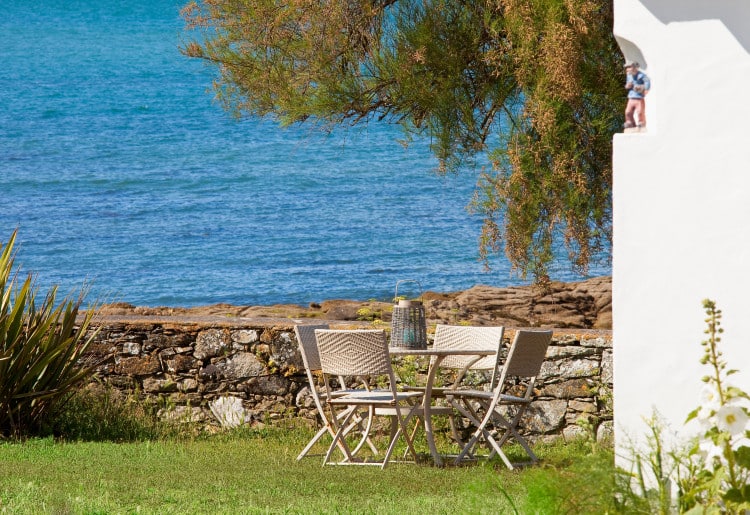Updated 16/06/2025
Winds near the coast carry salt, which can affect your garden plants. Here are some simple additions to survive salt winds and save the day in your coastal garden.
Coastal care
Coastal gardens tend to be exposed to the elements and more extremes of weather, particularly wind. Another challenge is salt. Salt in the wind can make leaves appear burnt and rapidly dry out the soil plants are growing in. Even if you live a few miles inland, you may struggle with this problem in your garden.
Luckily there are ways to adapt your garden so that you can still grow perfect plants in your plot.
Creating windbreaks by planting wind tolerant trees and shrubs on the windward side of the garden, growing plants closer together, with the taller plants shielding the shorter ones, deep watering and choosing plants adapted to coastal conditions are all good ways to help plants establish and grow well in your coastal garden.

Problem-free plants
Eucalyptus
Eucalyptus is hardy and tolerates salt winds extremely well.
Ideally, you want to go for a cultivar which has thicker cuticles on their leaves, like that of E. globulus, which has highly aromatic foliage.

Artemisia stelleriana (Beach wormwood)
This plant is native to China and Japan but has naturalised on coastal dunes and, as a result, is also very salt tolerant. Its soft, silvery foliage gives it a wilder, more natural look than other artemisia species and cultivars and it will happily grow in dry soil as long as it’s reasonably well-drained.

Armeria maritima (Sea thrift)
The clue to the success of this plant is in its name, ‘maritima,’ meaning ‘of the sea’. It originated by the sea and, as a result, has adapted to cope well with strong winds, salt spray and poor soil. It’s a densely growing perennial covered in compact clusters of pink flowers on long, thin stems from late spring and throughout summer and is hardy down to -15 degrees.

Euonymus japonicus
Euonymus do very well in coastal settings. Their small, glossy, leathery leaves help the plant retain water in exposed conditions.
The cultivar ‘Green Rocket’ is an upright grower which would do well in smaller gardens.

Phlox
Phlox subulata is hardy enough for sea-faring situations.
In fact, this mat-forming perennial has carpet of small linear leaves that give way to bright pink flowers in spring and summer.

So there you have it, a coastal setup needn’t mean you can’t have a lush green garden. Find the right care for the right plants and you will be enjoying a green oasis as well as sea views.
For more great gardening advice, make sure you head to my YouTube Channel. Make sure you’re subscribed with notifications on so you don’t miss any of my new videos.
Frequently Asked Questions:
1 – Why is gardening by the coast more challenging?
Coastal gardens are exposed to strong winds and salt spray, which can burn foliage, dry out soil quickly, and damage sensitive plants. Choosing tough, salt-tolerant plants and providing wind protection makes all the difference.
2 – How can I protect my garden from coastal winds?
Create natural windbreaks using hardy shrubs or trees like Eucalyptus or Euonymus. Plant taller species on the windward side and group plants closely to help shield more vulnerable varieties lower down.
3 – What plants are best for a coastal garden?
Look for salt-tolerant, wind-resistant varieties such as Eucalyptus globulus, Artemisia stelleriana, Armeria maritima, and Phlox subulata. These species thrive in harsh conditions and require little fuss once established.
4 – Can I grow flowering plants by the sea?
Absolutely! Sea thrift (Armeria maritima) and Phlox subulata both thrive in salty, breezy spots and produce vibrant blooms from spring through summer, proving you don’t have to sacrifice colour in a coastal setting.
5 – How close to the coast do salt winds affect gardeners?
Salt winds can affect gardens several miles inland, especially if your garden is elevated or exposed. If your plants show signs of leaf scorch or poor water retention, it’s worth treating your plot like a coastal site.

Leave A Comment